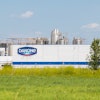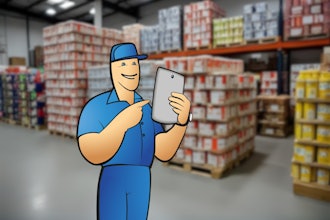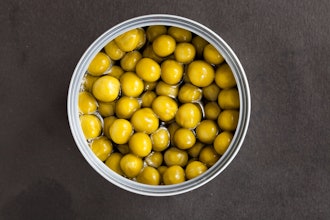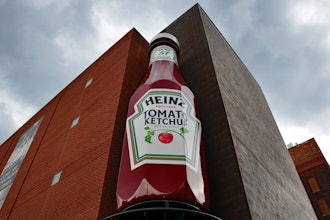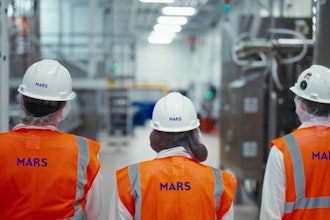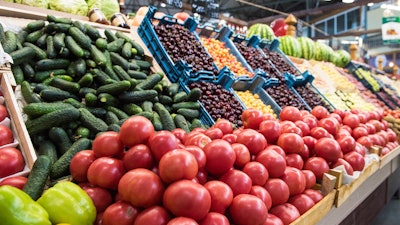
Eight hundred million of our fellow humans go to bed hungry every night, and the global COVID-19 pandemic has put another 130 million of us at risk for food insecurity. This issue is becoming even more serious as climate change continues to devastate the agricultural industry. Extreme temperatures, droughts, floods and unstable weather patterns impact how our food is grown and sourced. Wildfires and droughts have ravaged the Western United States, and the world, burning millions of acres, displacing thousands, and causing untold damage and destruction to crops, farms, infrastructure, economies and society.
These are critical issues that we can and must address and resolve. Now. To meet these challenges, intensified by supply chain interruptions, we urgently need new and better ways of growing and processing greater nutritional, plant-based foods closer to consumers. These techniques need to be swiftly put into practice. This is an existential issue affecting communities around the world. “Think globally and act locally” seems to be especially relevant when it comes to food insecurity.
 iStock
iStock
Understanding challenges
How bad is the problem? Climate change, urbanization and uncontrolled grazing are damaging arable land around the planet, with 80% already in use and 23 hectares per minute sacrificed to drought and desertification alone, according to the United Nations. Meanwhile, the global population is projected to grow to 8 billion by 2023 and close to 10 billion by 2050, threatening to widen the deficit between food and hungry people. Feeding 10 billion people will require an additional 109 million arable hectares, a landmass larger than Brazil. Compounding the land degradation problem, food production today contributes 26% of global greenhouse gas emissions.
Not surprisingly, low-income households are more likely to be food insecure. Many urban, rural and low-income neighborhoods are food deserts where affordable, nutritious food – and the markets that would carry these products – is lacking.
The pandemic, as it shuttered schools, hotels and restaurants, created supply chain challenges that cast another shadow over food security. Softening commercial demand was exacerbated by border closings and complications in shipping products across state lines – all of which created supply logjams, as consumers flocked to supermarkets to find empty or thinly stocked shelves. Add unemployment and the expectation of a new wave of COVID-19 as we head into the fall, and access to food is still a concern – even in the rural areas where it is grown.
Even when produce is readily available, consumer choice can mean that it is still missing from the table. Vegetables and fruits are typically bred for durability to survive long trips from farms around the globe to manufacturing or processing plants and then to the store shelf. Have you tasted corn that was harvested a week earlier? That lack of flavor is one more reason for consumers to reach for processed foods instead of fresh vegetables or fruits.
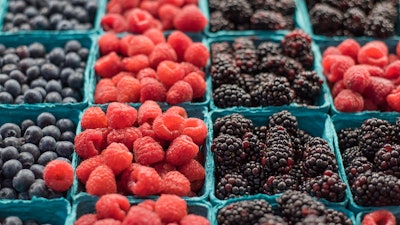 iStock
iStock
Solving shortcomings
We need ways to grow and process higher yields of fresher, more flavorful fruits and vegetables closer to home and with a lower impact on the environment. That means creatively combining old and new technologies in agriculture and bioscience to deliver more nutritious and better tasting foods locally – and on a global scale. And we need to do it in a sustainable way. And quickly.
Indoor urban farming – with its ability to control growing conditions – is part of the solution. By all accounts, it produces higher yields with its longer seasons and vertical arrangements, but existing indoor farming technology is far from ideal. The energy required to manage the microclimate and generate the lighting conditions for plants to grow indoors tends to off offset or compromise the sustainability benefits of being located near the consumer.
Moreover, vegetables and fruits – with genetic characteristics developed over tens of thousands of years – were never intended to grow in dark boxes with only artificial lighting. No technology can replicate what occurs outside in natural sunlight.
Implementing precise controls
Many urban farming innovations have tended to stay within the limitations of legacy agricultural systems and practices. To achieve greater yields, quality and efficiency requires a careful, methodical application of entirely new approaches to crops, operations, facilities, systems and the growing environment (COFSE), all integrated and continuously refined. We need to rethink the current indoor growing model, creating precision ecosystems with improved technologies like:
Abundant natural light using an advanced transparent foil that, unlike plastic or glass, substantially allows the full spectrum of the sun’s light reach the plants, helping them achieve their full genetic (and flavor) potential.
Supplemental grow lighting that significantly enhances and extends the plants’ photoperiod beyond natural daylight hours, maximizing crop growth and quality and reducing the crop time to harvest by up to 50%.
A sealed, cleanroom-like microclimate that keeps pests, herbicides, pesticides and pollutants outside – which also conserves water, getting up to 90% of the crop’s needs from within the building envelope.
A closed-loop convective air-circulation system that maintains ideal climatic conditions that remain virtually contaminant-free.
Natural temperature regulation using sunlight and organic foam-based clouds, dramatically reducing air-conditioning electricity requirements.
A multi-tier stepladder architecture that multiplies bushels per acre by the number of facility levels without sacrificing sunlight exposure.
Highly automated hybrid hydroponic-aeroponic systems and nutrients continuously optimized by the Internet of things (IoT) technology and machine learning. This automation reduces handling and associated costs, allowing for the highest yield and lowest environmental and cost impacts.
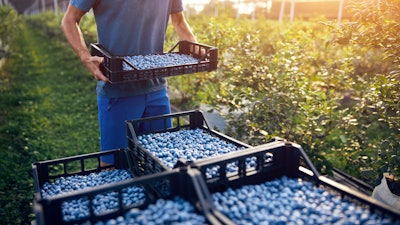 iStock
iStock
All of this begins with plant genetics and careful micropropagation to ensure that food starts with ideal origins– selected for flavor, yield, and nutrition – and is developed to support the plant in achieving its full genetic potential. Each crop is unique and that means the entire process must meet the specific needs of that crop.
Precision ecosystems that are designed to build upon the best aspects of current growing methods – outdoors, greenhouse and indoors – and replace their shortcomings with better technology and processes. With innovation creating the ability to produce much better yields than other comparably sized indoor farming systems, the approach is intended to consume substantially fewer natural resources than traditional indoor grow operations.
The world we live in now gives us the intelligence, operations and technologies we need to change and advance the outdated legacy of how farming is done today into tomorrow’s way of producing food – creating a robust, delicious and nutritious food chain on a global scale. Using this information, we can decentralize production, reducing our reliance on global supply chains, and move high-density, high yield growing systems closer to communities to ensure food security for all. We can do it in a way that is sustainable and that substantially reduces the impact on the environment. It’s time to do things differently.
 Troy McClellan
Troy McClellan
Troy McClellan, President, AgriFORCE Solutions, has focused on innovative design and construction technologies throughout his career, most recently as VP of Design and Construction at AgriFORCE Growing Systems. Prior to joining AgriFORCE, he was VP of Design and Development at W!GU City. His extensive experience includes executive and senior management roles at MGM Macau, Wynn Design & Development (Macau), Universal Studios (Japan), and several globally recognized design firms. Troy is a registered professional architect and received his master’s degree in Architecture from Montana State University.
1 COVID-19 will double number of people facing food crises unless swift action is taken. The World Food Programme.
2 Farming In The City. The ASEAN Post.
3 #FridayFact: Every minute, we lose 23 hectares of arable land worldwide to drought and desertification. The
United Nations Environment Programme.
4 World population projected to reach 9.8 billion in 2050, and 11.2 billion in 2100. United Nations Department of
Economic and Social Affairs.
5 Food production is responsible for one-quarter of the world’s greenhouse gas emissions. Our World in Data.



